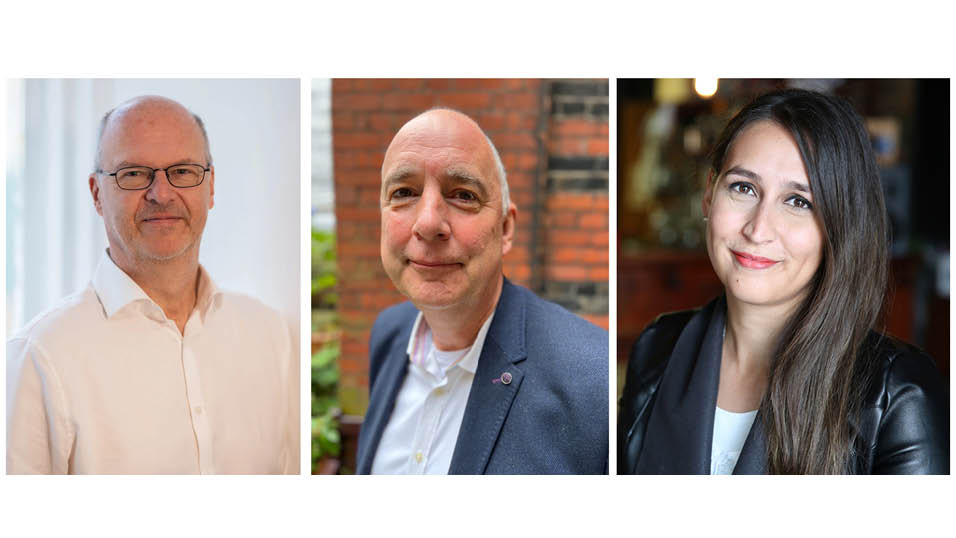For Bad Wolf’s new Arthurian epic, The Winter King, the team aimed for a tone more akin to the The West Wing than Game of Thrones. Pippa Considine reports
The Winter King is set in Dark Ages Wales, with legendary young warrior Arthur steeped in fifth century magic and nature but “the themes feel incredibly contemporary: Arthur’s journey, carving a new path in politics, is something that is as relevant today as it was then,” says executive producer at Bad Wolf, Lachlan MacKinnon.
Bad Wolf has a track record of taking on epic, world-building projects, including His Dark Materials, A Discovery of Witches and Dr Who. The studio’s co-founder Julie Gardner has long been a fan of Bernard Cornwell’s Warlord Chronicles. When the rights became available, the producer snapped them up. “The novels are the North Star for us,” says MacKinnon.
Funding the project took time. “Such an epic piece requires a certain budget level and it’s difficult to fund regardless of the economic climate,” says MacKinnon. There were several moments when it was almost greenlit. Then Sony Pictures Television acquired Bad Wolf in 2021 and the commission was announced in August of 2022.

It’s Bad Wolf’s first project with ITV. Streaming service ITVX has given ITV head of drama Polly Hill the ability to move into drama genres that the main channel might not commission, to reach new audiences.
The Warlord Chronicles have been adapted by Kate Brooke and Ed Whitmore who broke the three books down into five seasons. The first ten-part series takes on the first two thirds of the first instalment of the trilogy.
Described as a revisionist take on the Arthurian legends, Cornwell’s trilogy is grounded in the brutal reality of the fifth century.
Gardner wanted to keep that specificity and to elevate the screenplay, find a voice. She approached director Otto Bathurst, known for giving period drama Peaky Blinders its contemporary cool. “There are a lot of these kind of shows around,” says Bathurst. “Julie felt it needed a nitrous injection.” The vision was to root the show in the wild Welsh world, fifteen hundred years ago, avoiding period drama cliché.
Bathurst’s references were The West Wing and Churchill’s War rooms, rather than Game of Thrones and medieval castle. He also wanted a feel of Scandi noir.
“From a cinematic language point of view, we wanted it to feel modern, like a live, kinetic political thriller.”
King Arthur is a young, dynamic leader. “What attracted me to the project is the resonance of it, predominantly the character of King Arthur,” says Bathurst “He’s extraordinary, a man who gets involved in the leadership system, but has no ego at all, no agenda, has no desire to become king. …It’s very striking to see somebody whose only commitment is to the truth and doing what’s needed.”
Bathurst was also fascinated by the internal politics, “the backstabbing, all in a violent Dark Ages way, but the same story as now.”

Nature is “a big beast which we wanted to make a very present character in the show.” This presence was subtly built in the edit, bringing together images, moments. “You become very conscious of the presence of nature in a very subtle way – how raw and real and tough it was.”
How to treat magic was discussed from early development. “We wanted the show to be grounded, but at the same time you have those moment where nature marries with magic,” says MacKinnon.
“We rooted our magic so it could have happened,” says Bathurst. Arthur’s mythical sword Excalibur is its own character and the warrior’s relationship with the sword gives him “a deeper connection within himself.”
They worked with sound designer Alex Ellerington and composer Rob Lane to balance the epic with the real world. “There was a fine line to tread here as it’s so easy to take the audience out of the moment if the sound design was to become too elaborate and fantastical,” says Mackinnon.
Although they didn’t want the music to feel anachronistic, they didn’t rely on instruments from the fifth century. Each character had a distinctive theme. For example, for Nimue, a pagan druidess, drums and wind instruments convey her spiritual connection with Nature and the Gods. But the score reflected Arthur’s transformation from exiled warrior to heroic leader.
Casting Arthur involved a thorough search. “We wanted somebody with a real presence and charisma and a natural authority,” says Bathurst. “Iain De Caestecker blew us all away, he totally got that Arthur has this humble authority, which an incredibly tough thing to do.”

Casting director Andy Pryor introduced new faces, many fresh from drama school, all needing to be cast for a potential five seasons. “We wanted to create a fresh new world,” says Bathurst. “In the dark ages, if you made it past the age of 35, 40 you were lucky.”
From its base in Cardiff, Bad Wolf used locations across Wales and the West Country. Local crew, working with trainees supported by Screen Alliance Wales, roses to the challenges of the rigorous schedule and the elements.
“We were on a really tight budget with crazy ambition,” says Bathurst.
Shooting across seven months in 2022, from a sweltering 40 degrees in a Welsh quarry in July, through to the Gower Peninsula at minus four in the snow, fortuitously matched the story arc across the book.
For production designer James North the Dark Ages represented a conundrum. “Nobody knows what the Dark Ages looked like,” says Bathurst. “For Arthur’s stronghold, rather than doing your bog-standard castle with a moat, we based it on Churchill’s war rooms, a centre for warmongering.” Forget chickens, people sitting round a wooden table with a mug of ale, and pig swill. Instead, North created a 360-degree HQ in a cold storage warehouse in Cribbs Causeway in Bristol, extending across the car park.
“You could look everywhere,” says Bathurst. The set allowed for long transition shots, walking down corridors. “In West Wing, they had these long, long kind of traveling shots, political discussions going on as you’re as you’re flying down corridors.”
Working with the VFX team at Realtime, led by vfx supervisor Sue Land, shots from Morlais quarry in Wales were combined with Arthur’s stronghold to show it buried it inside the mountain.

With challenging lighting conditions and an equally challenging budget, Danish DoP Aske Fosse drew on his indie film experience. “We wanted it to feel organic and alive, more like some of those Scandi dramas rather than a glossy British period piece,” says Bathurst, “making sure we didn’t slip up on those British period drama banana skins.” On a practical level, they needed someone who could work at speed. “We needed someone who would be open to working fast. With minimal light, a lot of the time just shooting with wax oil lamps.”
They chose to use Petzval lenses, with the choice of just two focal lengths. Shooting on Alexa Minis, with much of the filming hand-held, they used the lenses for everything except some of the bigger wides. Bathurst describes “an amazing aberration.” Given constraints on the budget, “having those lenses helped what could have been quite bland – woodlands or landscapes – a real look.”
In the grade with colourist Gareth Spensley at Company 3, “there was a lot of balancing to do because we were moving incredibly fast. And shooting in England, with the weather going from sunny to rainy or cloudy all within ten minutes.” The Petzval lenses, Bathurst describes as “quite wild,” creating aberrations and flares.
For VFX, they tried to shoot on standard spherical lenses to give them a cleaner plate to work with. They created a plug-in Petvzal effect to overlay on top of all the images.
The show has already aired on Amazon’s MGM+ platform in the US. In the UK, ITV has given the series a big marketing push, including the 3D screen at Piccadilly Circus.
What of the next four seasons? Outlines for the first four scripts of season two are already in the pipeline.

DETAILS
Broadcaster: MGM+ / ITVX
Production company: Bad Wolf, One Big Picture
Writers: Kate Brooke, Ed Whitmore, Nessah Muthy, Amy Roberts & Loren McLaughlin
Execs: Julie Gardner, Lachlan MacKinnon, Kate Brooke, Ed Whitmore, Otto Bathurst, Toby Leslie, Sherry Marsh, Shelley Browning, Kenneth Browning
Producer: Catrin Lewis Defis
Directors: Otto Bathurst, Farren Blackburn, Anu Menon
DoPs: Aske Fosse, Stephan Pehrsson
Production Designer: James North
Supervising Art director: Dan Martin
Costume: Caroline Harris, Sarah Arthur
Make-up: Claire Pritchard Jones
Casting: Andy Pryor
VFX lead: Sue Land
Editors: Philip Kloss, David Freeman, Tommy Boulding, Malcolm Crowe
Colourist: Gareth Spensley
Music: Rob Lane
Sound Designer: Alex Ellerington
Audio Post: Boom Post

Jon Creamer
Share this story


















